
From 100 years of ringing, colour-ringing and monitoring data, we know that shelduck migrate from breeding locations to moulting areas between June and August, and then on to non-breeding areas and/or back to breeding areas from September onwards. Moulting sites are found around the UK and in the Wadden Sea (Netherlands and Germany), and shelduck must cross sea areas to reach these.
However, the information gathered through these methods has been insufficient to enable understanding of how shelduck might interact with offshore wind farms. The only practical way of collecting these data is to GPS track shelduck on migration across the sea, to see what routes they take, what heights and speeds they fly between, and how they might interact with offshore anthropogenic structures.
We’ve been using a temporary glue-mounted tagging method to attach GPS devices (under licence from the BTO) to shelduck just before they start migration (mid to late-June), to collect high resolution data (with position fixes and other data collection every 15 min or less) on their movements, until the tag is shed by the bird as it conducts it moult.
Over five years we have tracked 57 birds from five different UK locations, to gain an understanding of the variation in migration strategies from different breeding populations, between age and sex classes, and between birds from different breeding stages.
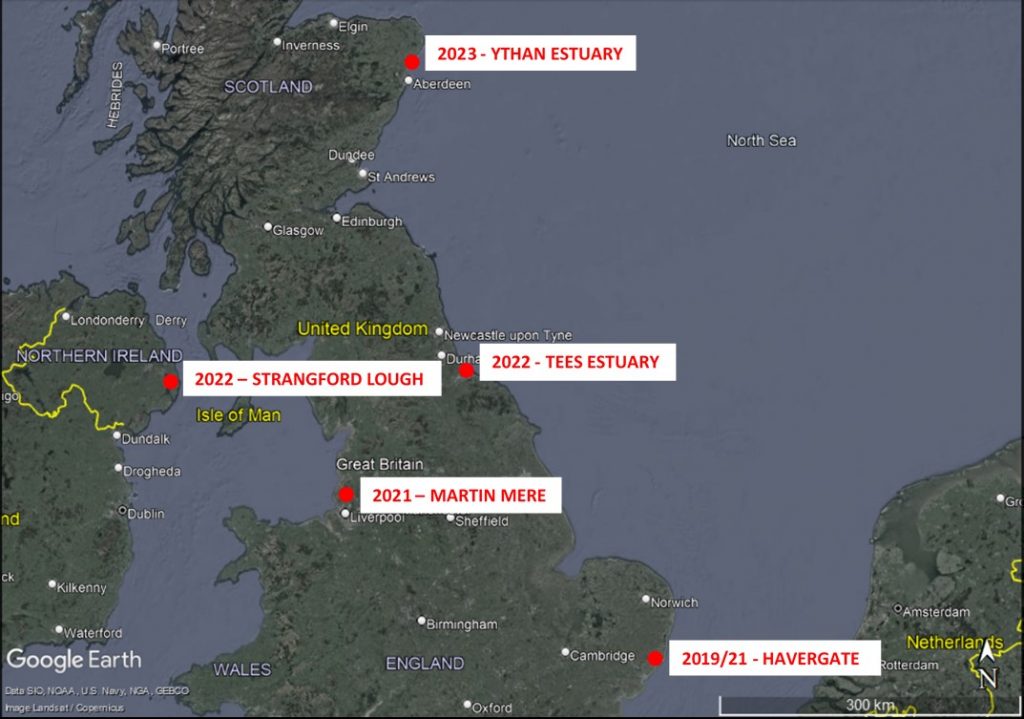
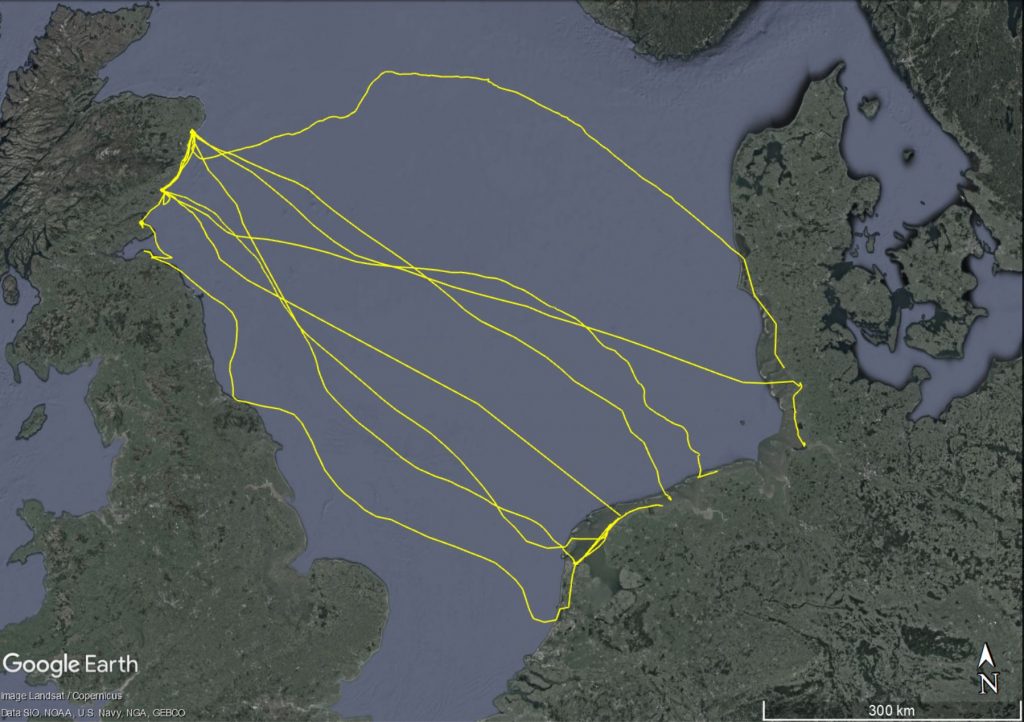
2023 – Ythan Estuary
Four adult males and four adult females were tagged on Inch Geck Island in the Ythan Estuary, Scotland, on 20th June.
It was assumed they would migrate to the Firth of Forth, as that is the nearest known moulting area, but the tracks clearly show that the Wadden Sea is the preferred destination.
Unlike most birds tracked in previous years, the western Dutch Wadden Sea is not the main landing location after migration.
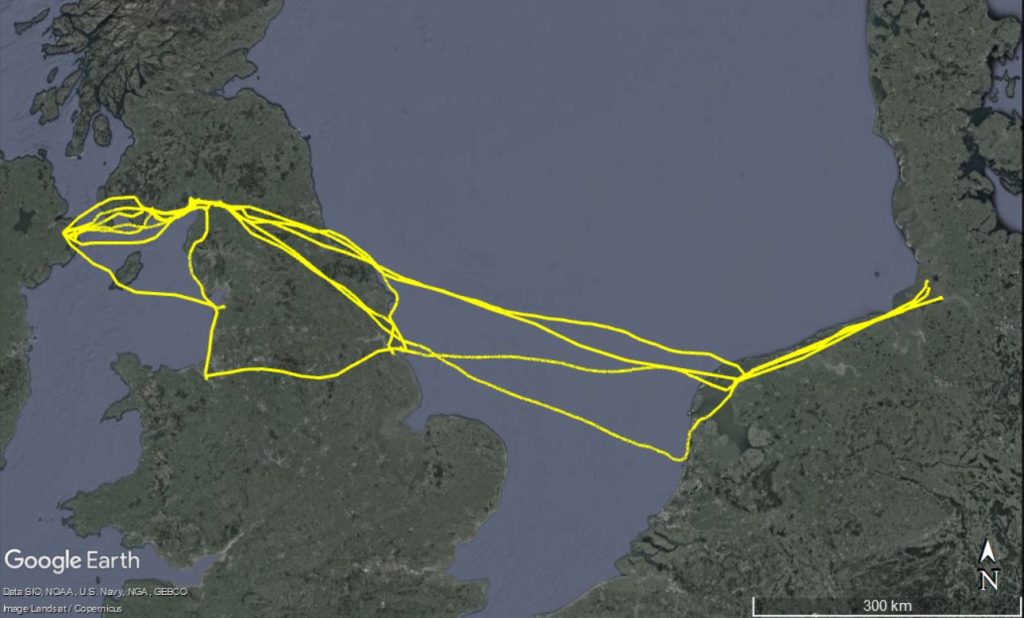
2022 – Strangford Lough
Six adult male, three adult female and one immature female were tagged within Strangford Lough, Northern Ireland, on the 12th and 13th June. Their migration tracks have shown connectivity with the Solway Firth, Dee Estuary, Humber Estuary, and the Wadden Sea, which are all protected sites for shelduck.
2022 – Tees Estuary
Four adult male, four adult female, one immature male and one immature female were tagged within the Tees Estuary, on the 26th June. Their migration tracks have shown connectivity with the Humber Estuary and the Wadden Sea, which are both known moulting sites. The immature female migrated to the Dee Estuary, which is the only westerly moult migration track collected.


2021 – RSPB Havergate Island
Three adult male, six adult female and one immature female were tagged on RSPB Havergate Island on 23rd June and 9th July. Eight of these migrated across the North Sea.
These migrated independently of each other, and took varying routes to reach their Wadden Sea moulting areas. Apart from one bird, they all stopped for an extended period in the Dutch Wadden Sea, in the Westhoek area.
2021 – WWT Martin Mere
Eight adult male and seven adult female shelduck were tagged in WWT Martin Mere on 15th June. All of these moved to the Ribble estuary for an extended period, and ten of them shed their tags here. The Ribble estuary is not a confirmed moulting area for shelduck, so this warrants further investigation. Five then migrated to the Dee or Mersey estuaries. All tags were shed before the end of July, so it is possible some birds migrated east to other estuaries after this.
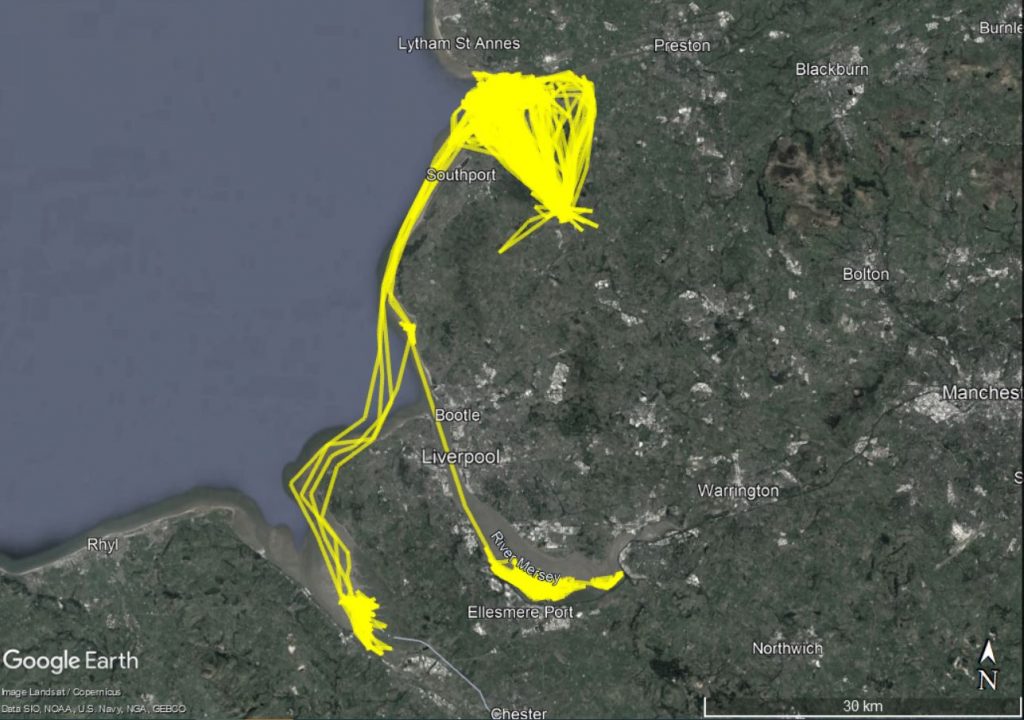
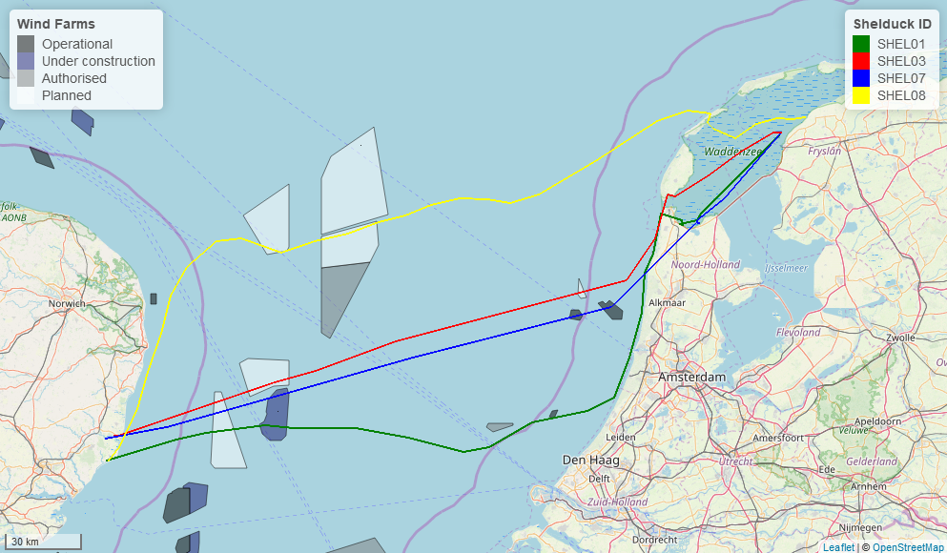
2019 – RSPB Havergate Island
Two adult male and two adult female shelduck were tagged on RSPB Havergate Island on 12th July as part of our BTO pilot tracking study. All of these migrated to the Wadden Sea. Despite being caught on the same day in the same roosting flock, they all migrated independently of one another, and took different routes. The results of this tagging work have been published (see publications section).